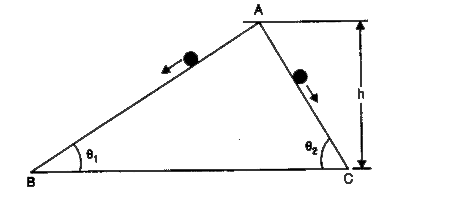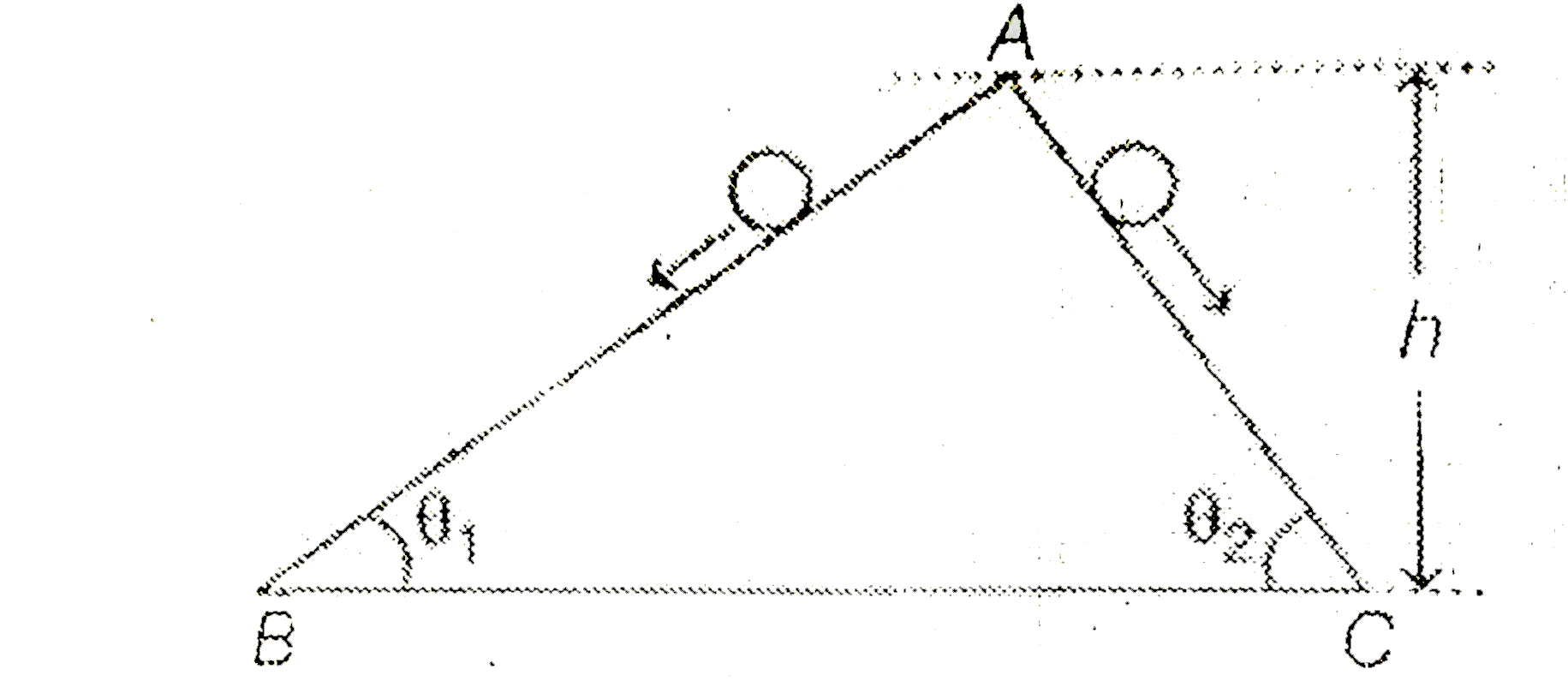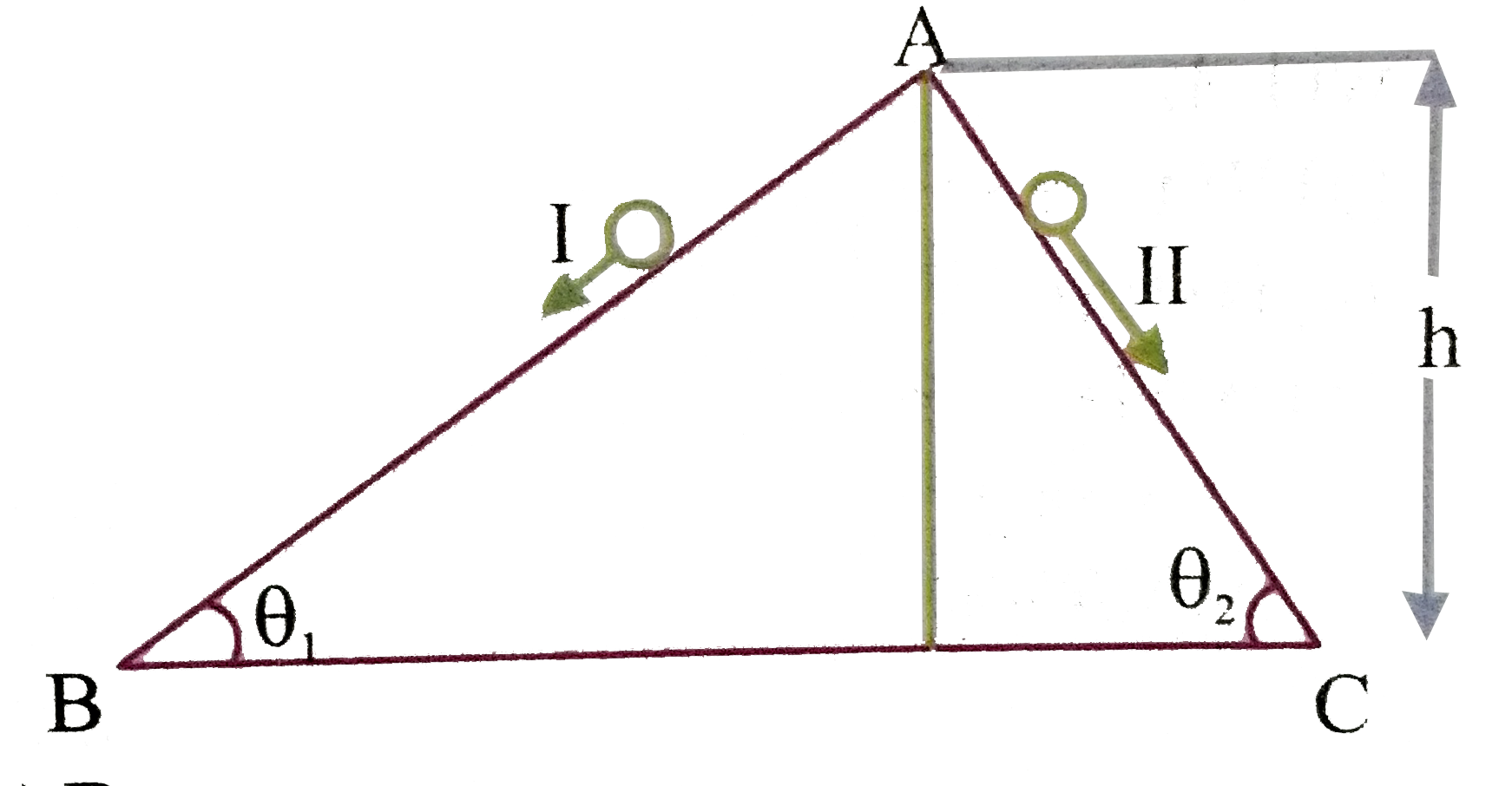Two inclined frictionless tracks, one gradual and the other steep meet at A from where to stones are allowed to slide down from rest, one on each track (fig.) Will hte stones reach the bottom at the same time? Will they reach there with the same speed? Explain, given , and h=10m. What are the speeds and time taken by the two stones?

or
Topper's Solved these Questions
Similar Questions
A stone is dropped from a height h. simultaneously, another stone is thrown up from the ground which reaches a height 4h. The two stones will cross each other after time:-
View SolutionA small disc is released from rest at A on an inclined plane AB so that it rolls down without slipping. It reaches the bottom with linear velocity v1 in time t1. Next a small ring released form rest on the inclined plane AC so that it rolls down without slipping. It reaches the bottom with linear vlocity v2 in time t2. Given θ1=30∘,θ2=60∘, and h=10m. Then,

View Solution
Knowledge Check
Two inclined frictionless tracks, one gradual and the other steep meet at a from where two stones are allowed to slide down from rest, one on each track as shown in Figure. Which of the following statement is correct ?
 .ABoth the stones reach the bottom at the same time but not with the same speed.BBoth the stones reach the bottom with the same speed and stone I reaches the bottom earlier than stone II.CBoth the stones reach the bottom with the same speed and stone II reaches the bottom earlier than stone I.DBoth the stones reach the bottom at different times and with different speeds
.ABoth the stones reach the bottom at the same time but not with the same speed.BBoth the stones reach the bottom with the same speed and stone I reaches the bottom earlier than stone II.CBoth the stones reach the bottom with the same speed and stone II reaches the bottom earlier than stone I.DBoth the stones reach the bottom at different times and with different speeds
A stone is thrown vertically upward with a speed of 10.0 ms−1 from the edge of a cliff 65 m high.How much later will it reach the bottom of the cliff ? What will be its speed just before hitting the bottom ?
View SolutionPlaces A and B are 100 km apart on a highway. One car starts from A and another from b at the same time. If the cars travel in the same direction at different speeds, they meet in 5 hours. If they travel towards each other, they meet in 1 hour. What are the speeds of the two cars
View SolutionPlaces A and B are 100 km apart on a highway. One car starts from A and another from b at the same time. If the cars travel in the same direction at different speeds, they meet in 5 hours. If they travel towards each other, they meet in 1 hour. What are the speeds of the two cars
View SolutionA stone is allowed to fall from the top of a tower 100m high and at the same time another stone is projected vertically upwards from the ground with a velocity of 25m/s. Calculate when and where the two stones will meet.
View SolutionSTATEMENT-1 : Two disks having same radius but different masses roll down without slipping from rest, on a rough inclined plane. They will take the same time to reach the bottom.
and
STATEMENT-2 : The heavier disc will have greater kinetic energy than the lighter disc, at the bottom.
View SolutionIdentical packets are dropped from two areoplanes, one above the equator and the other above the north poole, both at height h. Assuming all condition are identical, will those packets take same time to reach the surface of earth. Justify your answer.
View SolutionFrom the top of a tower, a stone is thrown up and it reaches the ground in time t1A second stone is thrown down with the same speed and it reaches the ground in time t2 A third stone is released from rest and it reaches the ground in time The correct relation between t1,t2 and t3 is :
View Solution